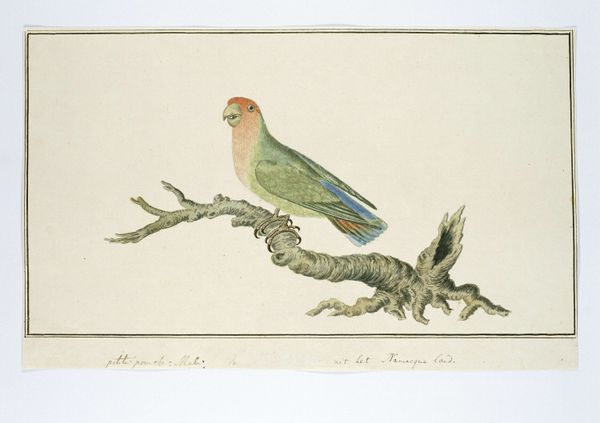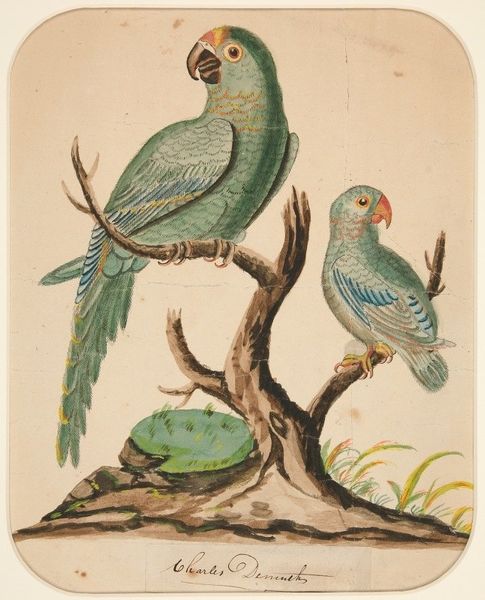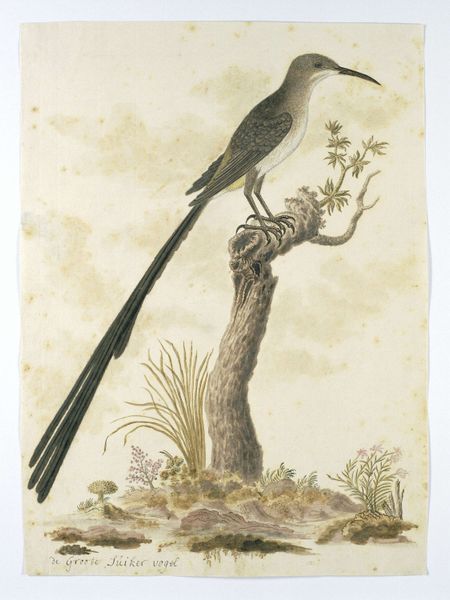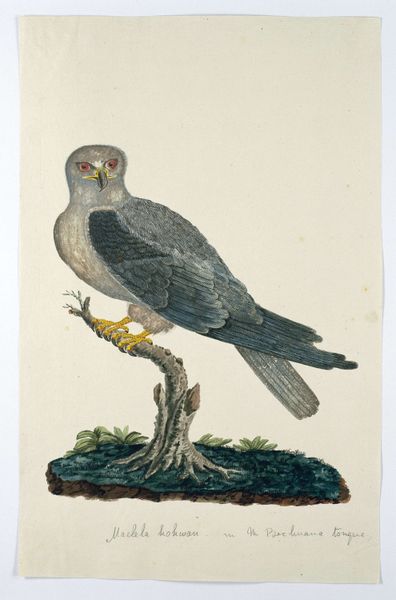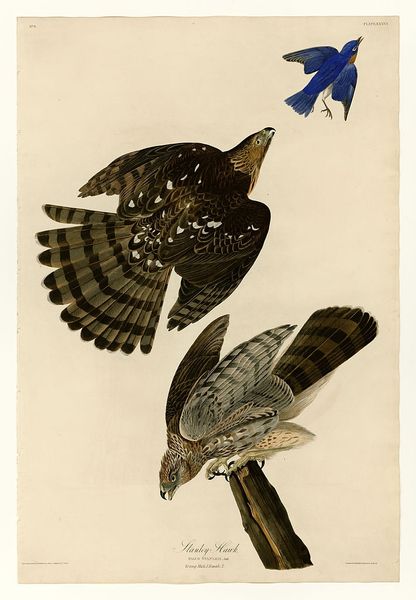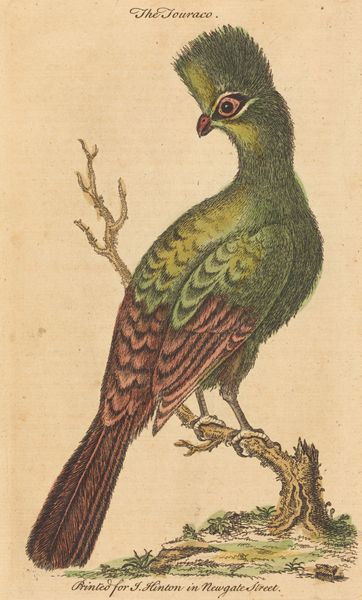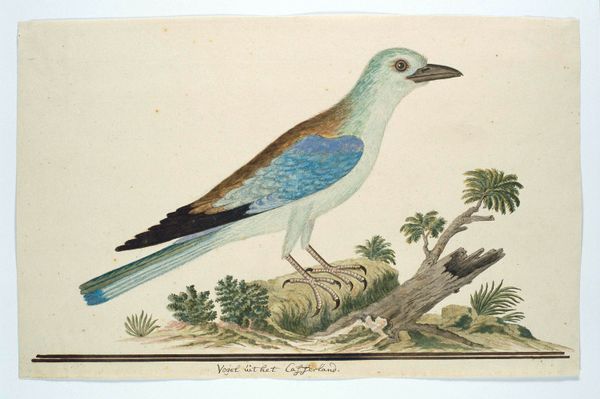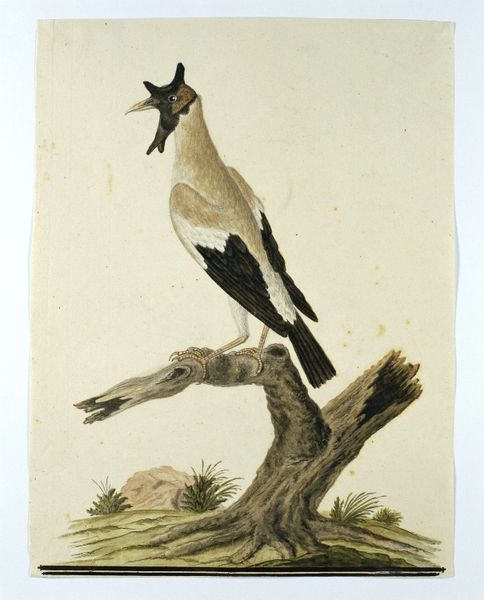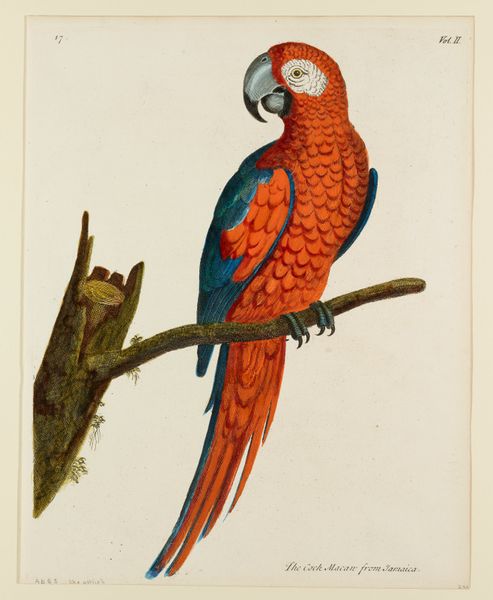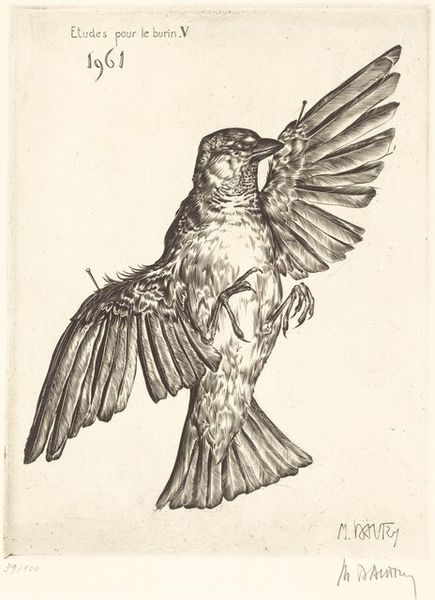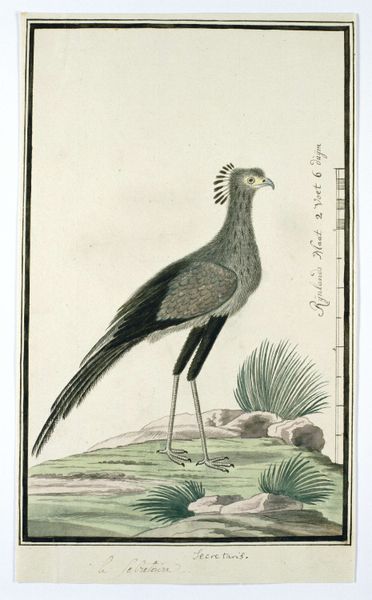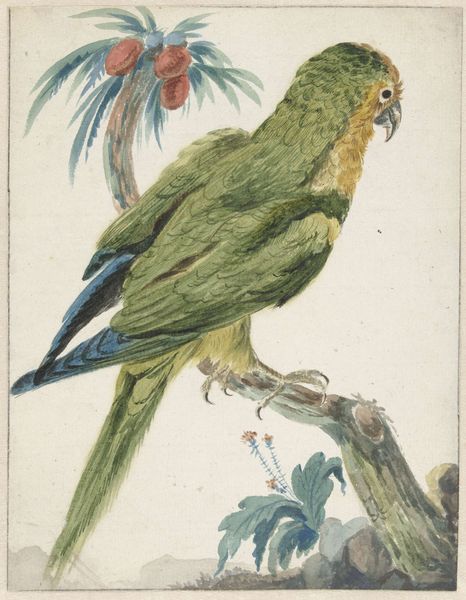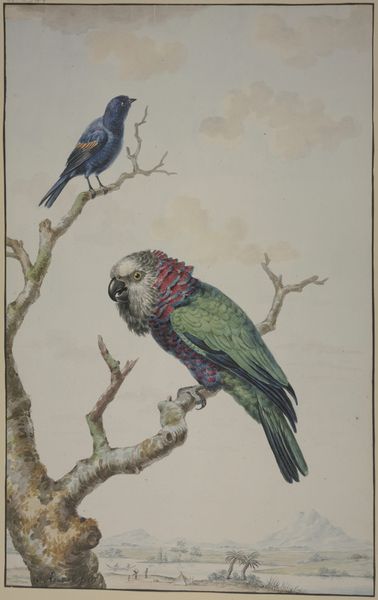
watercolor
#
landscape
#
caricature
#
watercolor
#
animal portrait
#
naive art
#
watercolour illustration
#
naturalism
#
watercolor
Dimensions: height 660 mm, width 480 mm, height 491 mm, width 329 mm, height mm, width mm
Copyright: Rijks Museum: Open Domain
Robert Jacob Gordon made this watercolor drawing of a Palm Cockatoo, also labelled "touraka de la nouvelle guinée," sometime before his death in 1795. As a Dutch military officer and explorer of Scottish descent stationed in Cape Town, South Africa, Gordon was a figure of the late Enlightenment. The drawing reflects the period's intense interest in natural history and its drive to classify and document the natural world, even those parts of it, like New Guinea, that remained largely unknown to Europeans. His position in the Dutch East India Company meant that he was at the forefront of this movement to catalogue and claim the natural world for Europe. Gordon's drawings speak to the social conditions that made such scientific and artistic endeavors possible. To fully understand them, we need to look at sources in both art history and the history of science, including the records of colonial institutions like the Dutch East India Company. It’s by combining these resources that we start to understand the complex dynamics of art, science, and empire in the 18th century.
Comments
No comments
Be the first to comment and join the conversation on the ultimate creative platform.
